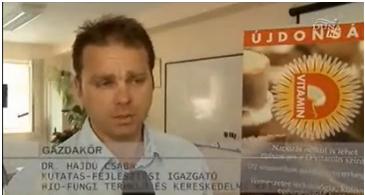Introduction
Author: András Geösel
The following curriculum contains necessary information on mushroom growing topics and combined with the learning material of oral lectures, can be used both on bachelor and master level.
The material of “Modern Mushroom Growing” consists of 12 lectures/chapters based on the 12 weeks of the semester. The most important topics (e.g. button mushroom growing, preparation of compost) are more detailed and their practical aspect is more significant than others.
The topics of the learning material are the following:
- Cultivated mushroom species of the world, Europe and Hungary (Szabó Anna)
- The nutritional values of mushrooms (Szabó Anna)
- Biology of cultivated mushrooms (Geösel András)
- Spawn production (Geösel András)
- Preparation of button mushroom compost and the use of spent compost (Szabó Anna)
- Button (Agaricus bisporus Lange/Imbach) mushroom growing (Szabó Anna)
- Pests and pathogens in button mushroom cultivation (Geösel András)
- Oyster mushroom cultivation (Szabó Anna)
- Shiitake cultivation (Geösel András)
- Cultivation of medicinal mushrooms (Geösel András)
- Mychorrhizal fungi (Geösel András)
- Picking and packing of cultivated mushrooms and mushroom products (Geösel András)
The first three chapters introduce the world of fungi by giving basic information. Since fungi are neither plants nor animals, detailed information on the taxonomy and nutritional values of fungi are given. Understanding basic mushroom biology is necessary for successful growing. Learning is aided by pictures and graphs.
Another three chapters are about the production of button mushroom, which is grown in the largest scale all around the world. Learning the process of compost making is not only beneficial for button mushroom production, but can be used for other species (e.g. shaggy ink cap) as well. Compost production is a buzz topic nowadays, since temporary shortages urge innovation and investments in compost plants.
The next chapter contains every important detail of mushroom growing from the traditional methods to the most modern technologies, where vocabulary specific to mushroom growing is also explained. Picking, packing and processing methods of mushrooms are introduced. The chapter on the pests and pathogens of mushrooms is especially important, since there are only two (synthetic) plant protection products in Hungary, which are allowed in mushroom production. Four other chapters introduce further cultivated mushrooms.
By acquiring the learning material, the student:
- understands and properly uses the vocabulary specific to mushroom growing,
- recognizes and characterizes cultivated mushrooms,
- can produce spawn, compost and substrate,
- is able to perform the basic tasks necessary in a cropping culture (with supervision),
- knows the steps of mushroom growing,
- knows the machines, facilities and equipments used in mushroom growing,
- recognizes the symptoms of the most important diseases of mushrooms,
- knows the hygienic regulations of mushroom growing,
- is familiar with the main mushroom procession types and methods,
- knows the different quality and trading categories.
Learning tips
Learning the separate parts of the material in the original order is recommended. With the exception of truffles, elements (used materials and growing conditions) of cultivation of most mushroom species show similarities, thus the differences should be carefully noted and compared. Extra information is available in some parts of the text by clicking on the link. These are only additional details; do not belong to the main text, but aid understanding it. Graphs and tables serve the same purpose, only they are required in the exam. Precise data (e.g. sodium content of mushrooms in mg) will not be included in the questions of the exam, but their significance and the consequences (e.g. why is it important that mushrooms have low sodium content) will be.
At the end of each chapter, references can be found. Learning aids and brochures are available for download as well, which further helps understanding and processing the learning material.
For first, a useful glossary can download here from David M. Beyer that helps to understand the fungus terminology.
Requirements
The semester ends with a written exam. The knowledge of students will be assessed by questions, which cover the whole material and can be answered with 2-4 sentences. At the end of the semester, students have to understand the basic vocabulary specific to mushroom growing (e.g. spawn, casing, CAC-ing etc.) and have to be familiar with the steps of mushroom production.
Authors
The authors of the curriculum are accomplished and experienced teachers and mushroom growers. Júlia Győrfi, PhD was the leading expert until her death in October 2012.
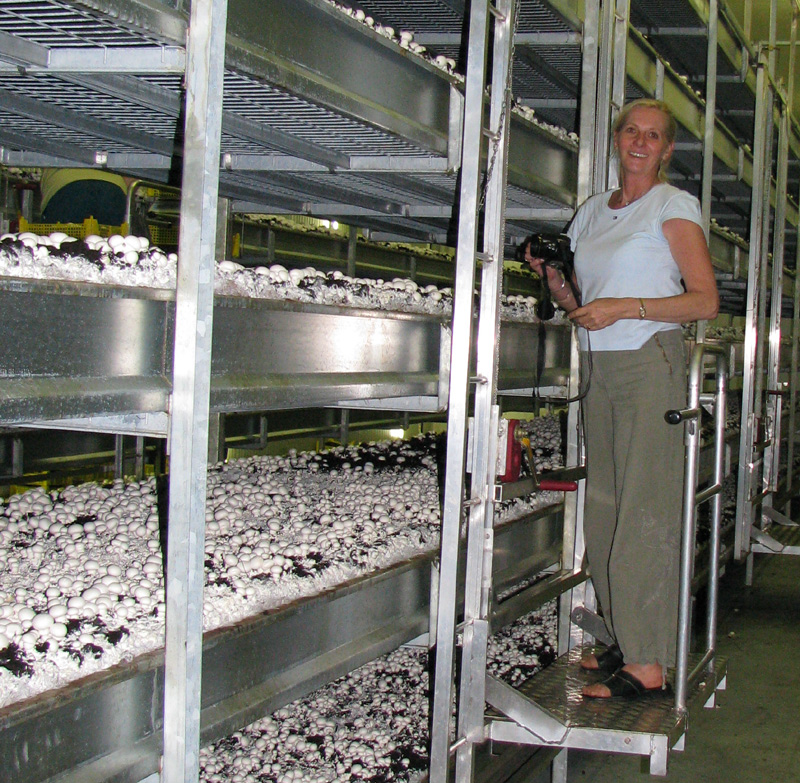
András Geösel, PhD wrote several chapters as well as proofed and edited the whole text. He made the photographs, videos and graphs of the curriculum.
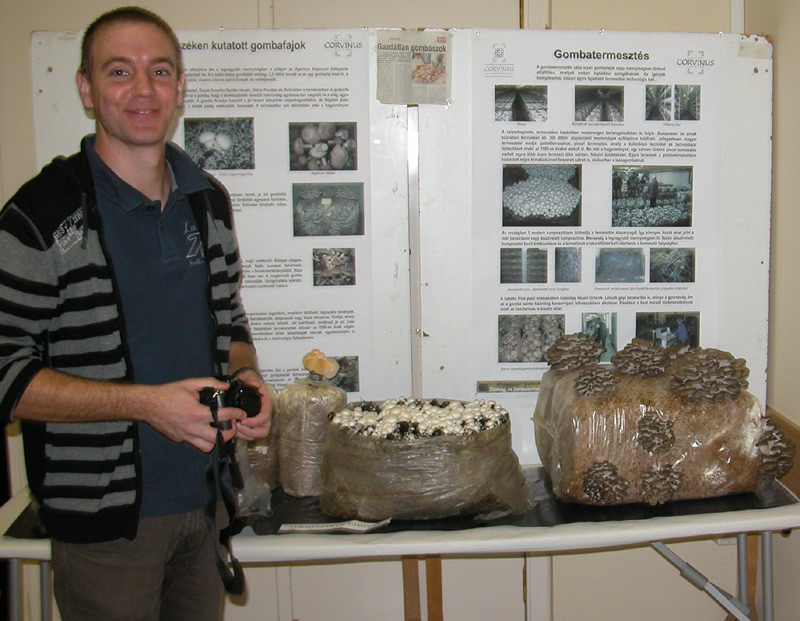
Anna Szabó wrote the chapter on oyster mushroom cultivation. Furthermore, she proofed and corrected the material. She is the author of most of the English texts.
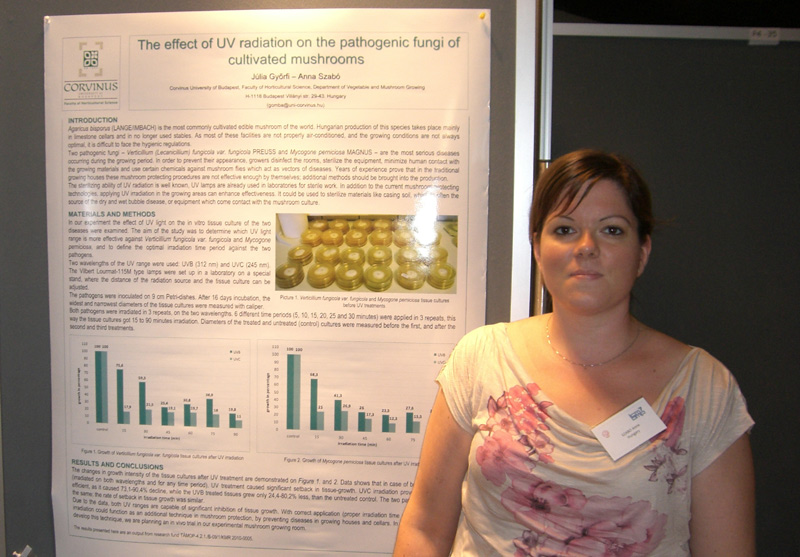
József Szarvas, PhD (accomplished and highly experienced expert in mushroom production) is one of the proof-reader of the curriculum.
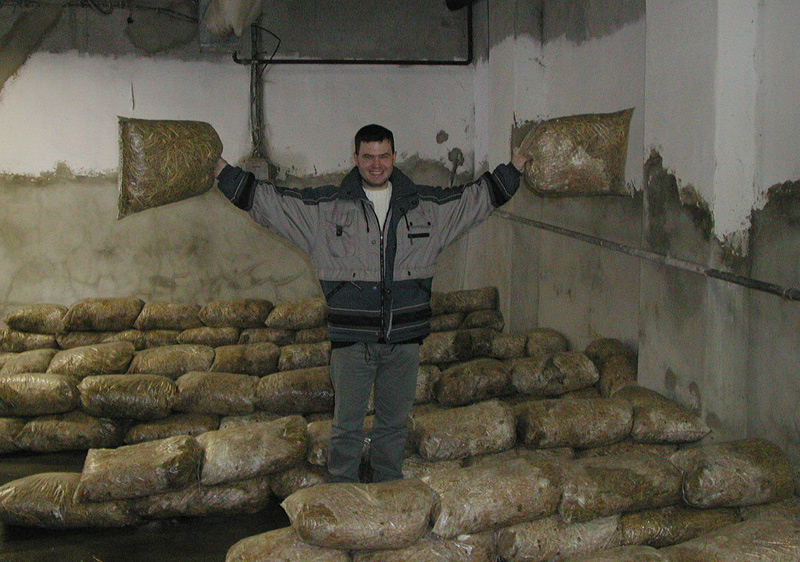
Csaba Hajdú, PhD (accomplished and highly experienced expert in mushroom production) is the other proof-reader of the curriculum.
The charts and drawings were prepared by Orsolya Szabó.

